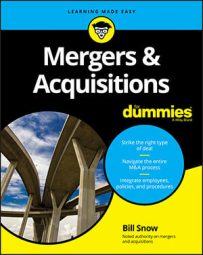In certain circumstances, Buyer may want to use stock to pay for all or part of an M&A deal. And in certain circumstances, Seller may be wise to accept that stock, though she should speak with her tax advisor about the tax ramifications of that arrangement.
Issuing stock allows Buyer to make an acquisition without using cash or borrowing money (or by using less cash and borrowing less money). The downside for Seller is that the stock obviously isn’t the same as cash. Seller has to convert that stock into cash by finding a Buyer for it.
Although Buyers may be tempted to issue more stock as a way of financing an acquisition, they should carefully consider the effects of diluting their stock in that way. Is issuing more stock really the best course of action, or does borrowing money to finance the acquisition make more sense?
The pluses and minuses of accepting stock as a form of consideration really boil down to the issue of liquidity: How easily can Seller sell that stock? Here are a few issues Sellers should consider when thinking about accepting Buyer’s stock:
Is the stock traded on a public exchange, and if so, which exchange? If stock isn’t publicly traded, the owner of that stock may be severely limited in his ability to convert that stock into cash. If Seller doesn’t anticipate needing that cash anytime in the foreseeable future, perhaps she can risk owning illiquid stock. But accepting illiquid stock doesn’t make sense if Seller needs the cash soon.
Sellers looking at accepting nonpublicly traded stock should consider Buyer’s prospects of eventually going public. If those prospects are limited, Seller may be in for a long-term ownership position in a private company.
If Buyer’s stock is publically traded, the next thing to remember is that not all stock is equal. Accepting stock traded on a major exchange (NYSE or NASDAQ) is far more desirable than accepting stock traded over-the-counter (OTC) or on the Pink Sheets because the major exchanges have far stricter listing requirements.
What is the average daily volume? Average daily volume (the average number of shares traded per day over a period of time) is an important consideration, too. If a stock is thinly traded (has a low average daily volume), the Seller who accepted it may be limited in her ability to sell that stock.
For example, say Seller receives 10 million shares of stock as part of the consideration for selling her business. If the stock trades at $1 per share, Seller has $10 million worth of stock.
However, if the average daily trading volume is, say, 10,000 shares, she essentially has an illiquid stock. Putting in a trade for all 10 million shares results in crashing the share price. If only 10,000 shares (on average) trade hands per day, the odds that she can sell 10 million shares in a short period of time are virtually nil.
On the other hand, a stock with a higher trading volume is usually easier to sell.
In general, the average daily volume is higher for stocks listed on NYSE and NASDAQ than for stocks listed OTC or on the Pink Sheets.
Stock (public or nonpublic) received as a result of a business sale is usually restricted, meaning that the owner of that stock can’t sell the stock for some period of time. That length of time depends on securities regulations. In order to help prevent a crash of the stock price, Buyer may ask Seller to agree to a restricted period longer than current securities laws.
Even if securities law restrictions no longer restrict a stock, a thinly traded stock is effectively a restricted stock (it’s pretty hard to sell a stock that no one’s buying).

